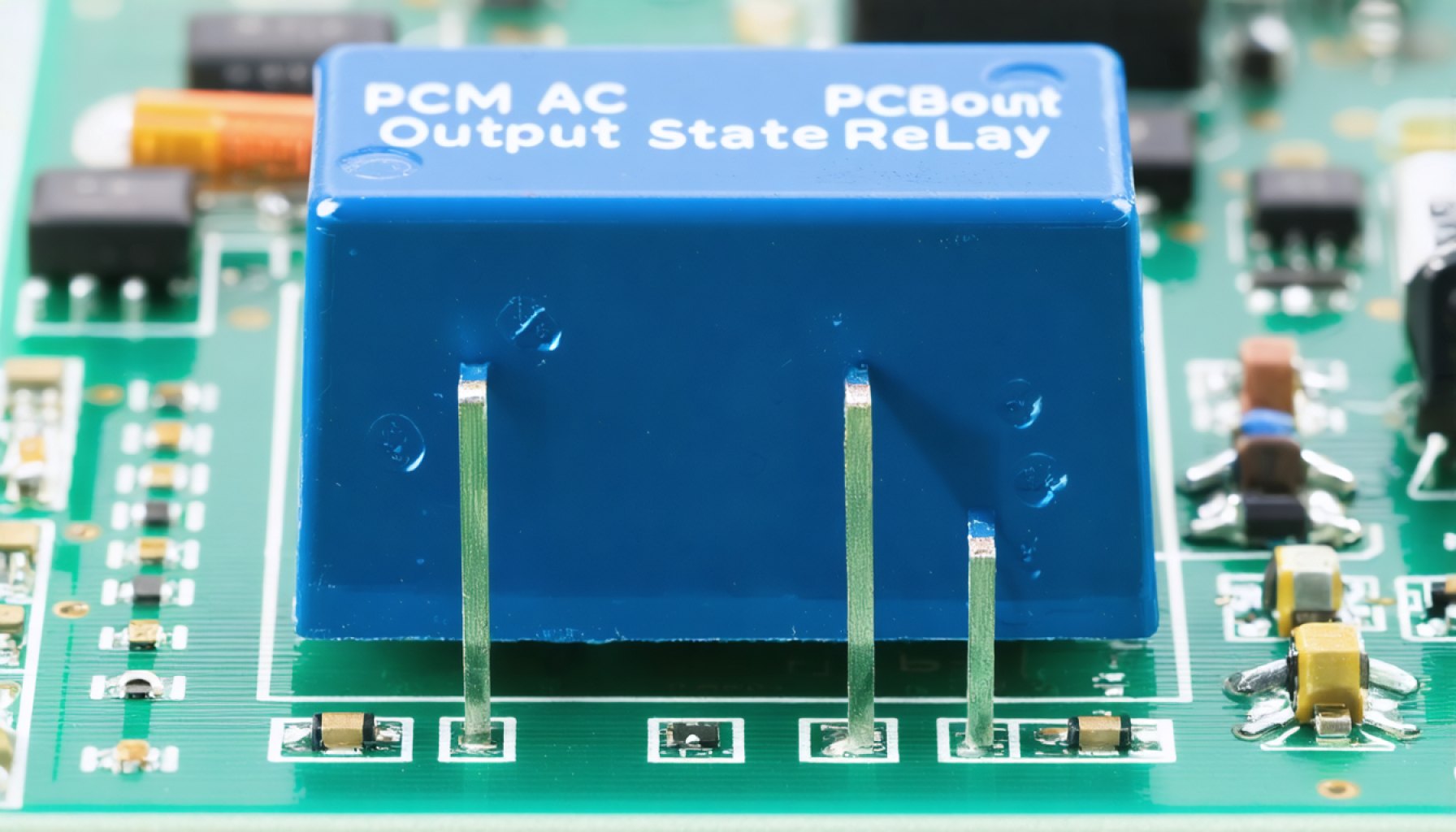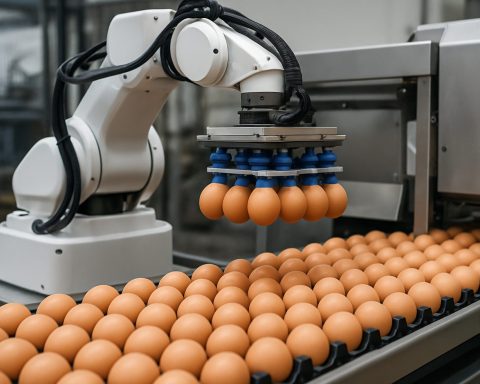- The market for PCB Mount AC Output Solid State Relays (SSRs) is set to expand from $317 million in 2024 to $434 million by 2031, with a CAGR of 4.6%.
- SSRs, known for their rapid switching times and durability, offer advantages over traditional electromechanical relays.
- Key players like Panasonic, OMRON, and Toshiba are focusing on SSR technology to boost manufacturing efficiency.
- Technological advancements in Asia, particularly Japan and China, are making SSRs more accessible and affordable.
- SSRs are pivotal in enhancing energy efficiency and automation across industries, from consumer electronics to industrial automation.
- Challenges include semiconductor shortages impacting SSR prices and availability.
- The evolving market offers significant opportunities for businesses and investors to explore emerging trends and growth drivers.
- The industry is undergoing a paradigm shift toward smarter, sustainable electronic systems, prompting strategic innovation.
With enticing prospects, the world of PCB Mount AC Output Solid State Relays is poised for significant evolution and expansion. Picture the ubiquitous circuit board, humming beneath the surface of our gadgets. It’s here that the Solid State Relay (SSR), a silent conductor of electricity, is transforming industries by offering unparalleled precision and durability compared to its mechanical counterparts.
Driving this electric symphony is an anticipated surge in market size, forecasted to leap from a value of $317 million in 2024 to a striking $434 million by 2031. This growth, propelled by a steady CAGR of 4.6%, signals a vibrant evolution catering to diverse applications ranging from consumer electronics to industrial automation.
A kaleidoscope of technological advancements has spotlighted the advantages of SSRs. Unlike traditional electromechanical relays, SSRs offer rapid switching times due to their lack of moving parts, which significantly reduces wear and extends their lifespan. This advantage is enticing manufacturers across the globe, with industry giants like Panasonic, OMRON, and Toshiba leading the charge. Each is jockeying for a prime position to harness the efficiencies that SSRs provide.
Delving into global dynamics reveals an intriguing narrative. Technological innovation continues to funnel through regional powerhouses, particularly in Asia — a region booming with electronic manufacturing. Companies within nations such as Japan and China are trailblazing advancements that ripple across the electronics landscape, making SSRs more accessible and affordable.
Moreover, the relentless quest for energy efficiency and automation accelerates SSR adoption. Whether in industrial robots maneuvering with millimetric precision or in the smart devices optimizing home energy use, SSRelays ensure operational efficiency and superior thermal management.
Yet, this dynamic arena isn’t without challenges. The semiconductor materials that form the foundation of SSRs face supply constraints, which could impact prices and availability. The semiconductor shortage is a sobering reminder of the delicate balance within the technology supply chain—a challenge that stakeholders are keenly attempting to mitigate.
For businesses and investors, the landscape of SSRs offers a wealth of opportunities. Understanding the key drivers of growth and technological trends allows companies to strategize effectively, tapping into emerging markets and refining their competitive edge.
The path forward for PCB Mount AC Output Solid State Relays is not merely about incremental advances but embodies a broader paradigm shift towards smarter, more sustainable electronic infrastructure. Embracing this shift—armed with rigorous analysis and strategic insights—could be the linchpin in unlocking unprecedented growth and innovation in the electronics domain.
Why the Future of PCB Mount AC Output Solid State Relays Looks Bright: What You Need to Know
The evolving landscape of PCB Mount AC Output Solid State Relays (SSRs) is paving the way for a tech revolution in electronics. As an integral component in modern devices, SSRs are distinguished by their durability and precision over traditional mechanical relays. Here’s a deeper dive into the world of SSRs, brimming with additional facts, insights, and expert perspectives.
Key Features and Technological Advantages
1. Rapid Switching Times: SSRs offer faster switching times because they lack mechanical parts, which means no physical contact is required to change states. This significantly reduces wear and extends the lifespan of devices, minimizing maintenance costs.
2. Enhanced Durability: These relays can perform effectively in harsh environments, making them suitable for a wide range of applications including industrial automation and consumer electronics.
3. Electrical Isolation: SSRs provide better electrical isolation than their mechanical counterparts, which is crucial for safety in high-voltage applications.
4. Noise Reduction: SSRs operate silently, providing a noise-free environment crucial for certain applications in medical and residential settings.
Market Outlook and Trends
The global market for PCB Mount AC Output SSRs is projected to grow from $317 million in 2024 to $434 million by 2031, driven by a CAGR of 4.6%. This growth reflects increased adoption across various sectors, including:
– Consumer Electronics: As electronics become more compact and multifunctional, the demand for reliable and durable SSRs has surged.
– Industrial Automation: Industries are increasingly adopting SSRs for their reliability and efficiency, particularly in scenarios requiring precise control and power management.
– Sustainability Initiatives: SSRs align with global energy efficiency goals, replacing mechanical relays that consume more power and have a shorter lifespan.
Global Dynamics and Challenges
In a landscape peppered with challenges, the semiconductor material shortage remains a looming concern. This shortage could impact the pricing and availability of SSRs, as semiconductor materials are integral to their production. To combat supply chain disruptions, businesses are exploring alternative suppliers and investing in local manufacturing capabilities.
How-To Steps & Life Hacks
– Integrating SSRs: When designing circuits, ensure appropriate heat sinking and load management to maximize SSR efficiency.
– Maintenance Tips: Regularly check for heat dissipation to prevent overheating, ensuring long-term reliability.
Pros & Cons Overview
Pros:
– High reliability and longevity
– Faster switching times
– Silent operation
– Better electrical isolation
Cons:
– Higher initial cost compared to traditional relays
– Sensitive to overvoltage and transient conditions without proper protection
Actionable Recommendations
– For Manufacturers: Focus on innovation in heat management and component miniaturization to stay competitive.
– For Investors: Target companies heavily investing in automation and energy-efficient solutions, where SSRs play a pivotal role.
Related Links
– Explore Panasonic Electronics
– Discover Omron’s Solutions
– Learn About Toshiba Innovations
The transformative potential of SSRs is undeniable. By navigating the challenges and leveraging the trends, stakeholders in the electronics industry can tap into the growth projected for this vital technology, fostering a robust, energy-efficient future.










